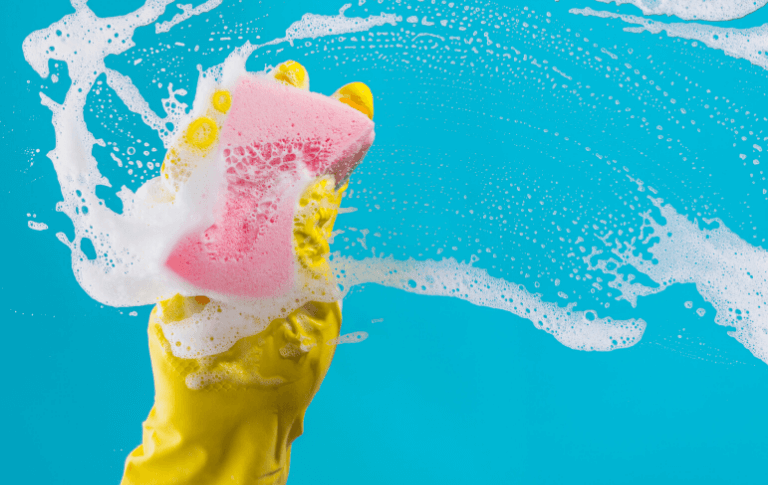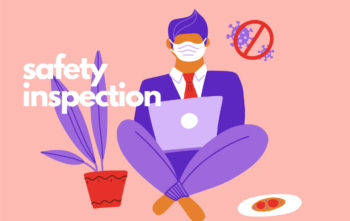It’s every employer’s duty to make sure their staff have a safe and healthy work space to come to. Your jurisdiction’s workplace health and safety regulations will most likely mandate your assessing risks and making sure you have control measures in place to prevent or minimize everyone’s exposure. We recommend you stay in touch with your safety officer about the specific laws in your state or city so you can tailor your workplace procedures to suit.
COVID-19 Workplace Procedures
While people transition back into their workplaces, it’s important to make sure you put a range of measures in place to minimize any COVID-19-related risks that may pose. Way We Do has developed the COVID-19 Workplace Procedures Management Checklist specifically for this purpose. Together with your management team, you can use this checklist to make sure you’ve put all your planning measures in place as effectively as possible.
The low-cost measures set out in the checklist will help slow or stop the spread of infections among your team and your customers – and not just COVID-19, but the usual suspects as well, like colds, flu, and stomach bugs. To paraphrase a well-known quote, “The price of freedom (in this case, from infection) is eternal vigilance.” In that vein, we encourage you to start this process now, even if COVID-19 hasn’t arrived in the community(ies) you operate in. Taking these steps will lower the number of days your business loses due to illness, at the same time as slowing the spread of COVID-19 if and when it does arrives at your door.
The latest information on how long SARS-COV-2 (the cause of COVID-19) can survive on inanimate objects (surfaces) is that it will vary depending on things like the number of respiratory droplets, and the environmental temperature and humidity. In general, coronaviruses don’t survive long once the droplets produced by coughing or sneezing have dried out.
So, taking measures like improving the ventilation in areas where someone was ill, or suspected to be ill, with COVID-19 will help shorten the time it takes to get any respiratory droplets out of the air. Remember, cleaning alone doesn’t kill germs, but taking these additional steps will help reduce their concentration, and with it, the risk of the infection’s spread.

Your COVID-19 Workplace Procedures: More Than Cleaning
Implementing and managing your COVID-19 workplace procedures involves a number of different tasks – from staying up to date with the latest news, communication and response plans, to managing sick employees, and their legal entitlements. You’ll also need to be ready to make decisions quickly should second- and third-wave restrictions come into play. Some of the topics we’ve covered off in our new COVID-19 Workplace Management process are:
- staying on top of COVID-19 news, and changing your response procedures as necessary
- updating your employees on the latest news and actions
- arranging for staff flu vaccinations
- managing staff who are sick
- managing sick leave, vacation leave and workers’ compensation
- remote working procedures
- safe hygiene practices
- personal protection equipment (PPE)
- updating first aid officers on infection procedures
- restocking first aid kits
- ensuring workplaces, including vehicles, are well ventilated.
Are shared workspaces at a higher risk?
There’s no indication that a shared workspace is likely to have more risk than a regular space, except where physical distancing is reduced. Have all essential staff who use a flexible workspace clean their work area with a disinfecting wipe prior to use and if possible, sit one desk further away from others.
Once you’ve applied a cleaning solution to a surface, don’t wipe it off right away. Many disinfectant products, such as wipes and sprays, need to stay wet on a surface for 10 minutes to be effective. Always read the directions, and be sure to use the products as instructed to avoid damaging sensitive items like phones and other electronic devices. Consider using wipeable covers for electronics.
Deep Clean Decontamination versus Routine Environmental Cleaning
“Cleaning” is physically removing the germs and dirt from surfaces, whereas “disinfecting” means using chemicals to kill germs on surfaces.
A Deep Clean Decontamination is required when there are one or more suspected COVID-19 cases in a high-risk facility, or one confirmed case in any setting. Cleaning both structural hard surfaces and contents provides a high degree of assurance that the space can be safely reoccupied. Clean and disinfect hard surfaces using either:
- a two-step clean, starting with a physical clean with detergent and water, followed by a clean with 1,000 ppm bleach solution
- a two-in-one clean, which is a physical clean with a combined detergent and 1,000 ppm bleach solution made daily from a concentrated solution.
Whichever option you choose, be sure to check the manufacturer’s instructions for how to make up the correct bleach dilution. Make up a fresh solution each day.
There’s no need to close an entire workplace while you’re having it cleaned and disinfected, particularly if the affected person has only visited parts of it. However, you must make sure these spaces are cleaned and disinfected before any of your team members or customers return to them.
Implementing sound cleaning and disinfecting measures in your workplaces is critical to protecting yourself and others from the risk of exposure to COVID-19 and other infections. How often you should carry out this practice depends on the work you do and how at risk you may be — for instance, a private office will be less likely than a busy medical practice to come into regular contact with infections – but you should make sure your workplace is cleaned and disinfected at least once daily.
The Way We Do team has created a COVID-19 Cleaning Checklist your cleaning team can use. That way, everyone knows all eventualities are safely covered. To add this checklist, and the COVID-19 Workplace Management Checklist, to your Way We Do account, just email our support team.





